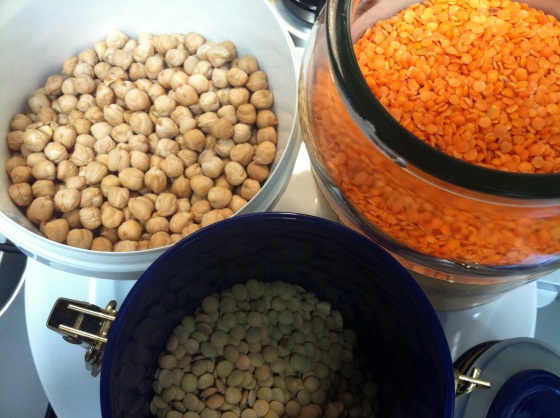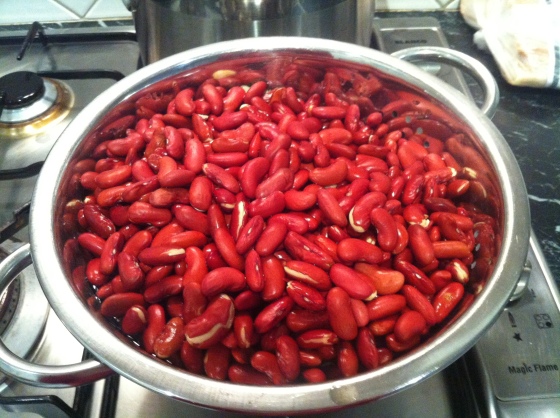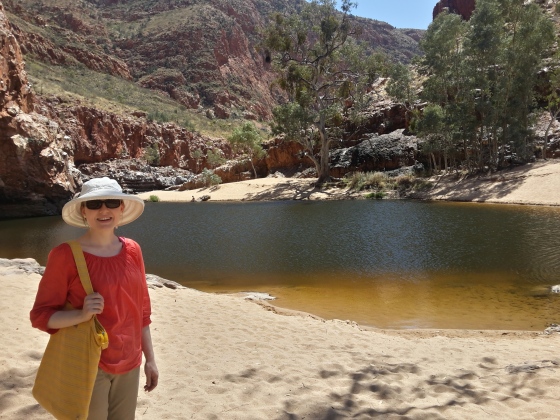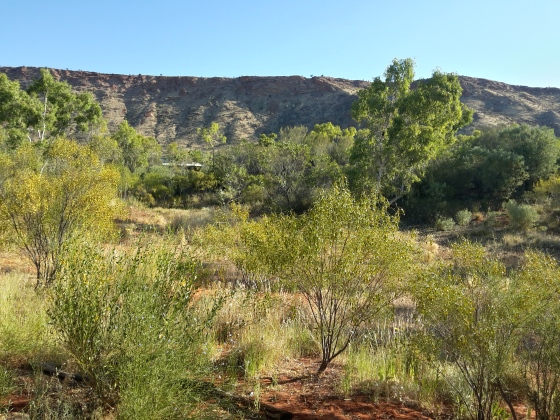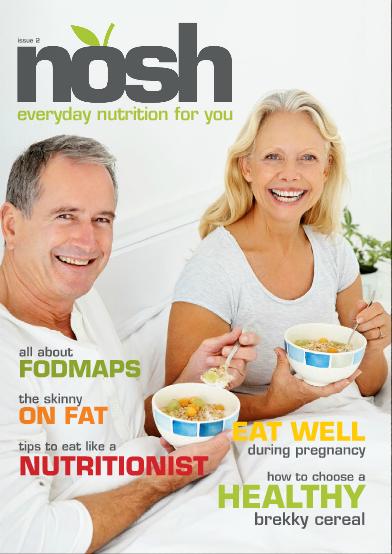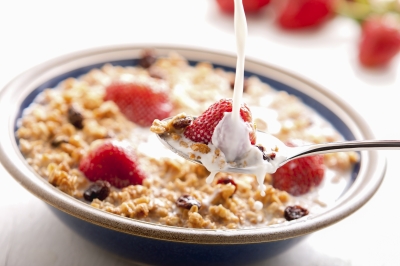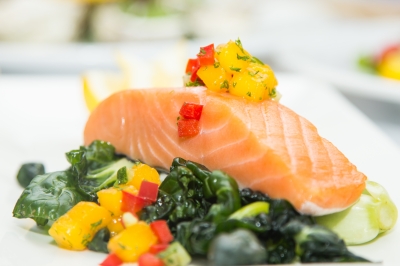A couple of posts ago, I started off this series of three posts on Exploring Fats, in response to several requests from different readers. My first post in this series was on the different types of fat: Saturated, Unsaturated and Trans. If you missed that post, I would strongly encourage you to revisit it before reading ahead, as this is one aspect of nutrition science that can get tricky quickly!
Last time, after much explanation of the specifics of the different types of fats, I boiled down the post to the very simple: less animal fats, more plant oils.
This time, I’ll attempt to boil down a slightly more tricky topic, Omega-6 fatty acids, and whether it’s true to say that seed oils (that are high in Omega-6 fatty acids) are ‘toxic’ for you.

Background
As we established last time, animal fats are usually high in saturated fatty acids; plant oils are usually high in unsaturated fatty acids. Unsaturated fatty acids can either be monounsaturated or polyunsaturated.
Polyunsaturated fatty acids can be further broken down into either Omega-3 or Omega-6 fatty acids. So Omega-6, which we’re talking about today, is one of the two types of polyunsaturated fatty acids.
See below for a diagram of how all of this is related:
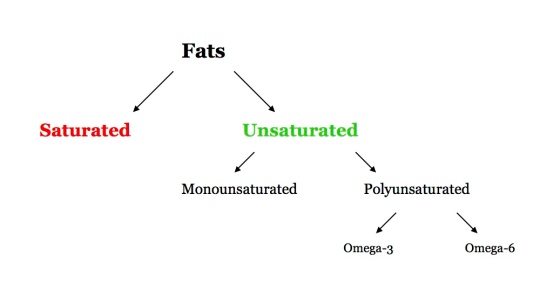
Omega-6 is found in seeds, oils, nuts, and in general is something we easily get plenty of in the average Western diet.
The other type of polyunsaturated fatty acid, Omega-3, is found in oily fish (herring/kippers, mackerel, salmon, sardines, tuna etc), fortified eggs, walnuts, canola oil/margarine and linseeds/flaxseeds (and flaxseed oil). Omega-3 is much harder to get enough of, and generally in a modern Western context, we have to go out of our way to get enough. I’ll go into Omega-3 fatty acids in more detail in my next post.
Omega-6 and Omega-3 fatty acids are also called essential fatty acids. They are called essential because, unlike other types of fatty acids, humans cannot synthesise them from other fatty acids inside our bodies. So we need to get them in our diet.
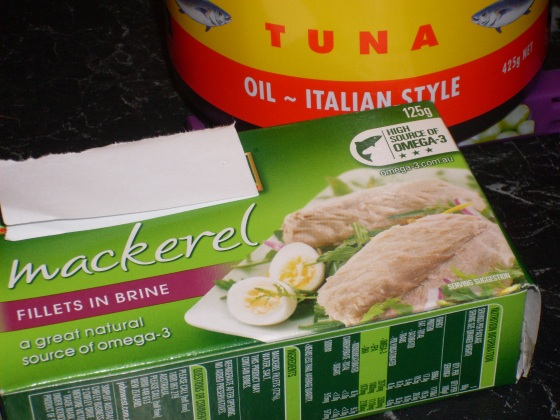
Canned fish is a convenient way to get your omega-3 fatty acids.
Tuna and mackerel (pictured above) are two good sources of omega-3.
What’s the big deal with Omega-6?
There’s been a lot of talk over the years that we have too much Omega-6 in our diet. Supporters argue that eating too many foods high in Omega-6 fatty acids increases the risk of disease, because it is broken down in our bodies to a number of compounds that promote inflammation. A growing body of research indicates that chronic (long-term) inflammation increases the risk of a number of diseases.
Interesting theory, but does it play out?
Actually, no, at least as far as the latest evidence is concerned. A Science Advisory from the American Heart Association, published in the prestigious journal Circulation in 2009, gives an excellent review of the evidence. They note that while Omega-6 acts as a precursor to compounds that promote inflammation in the body, it actually also acts as a precursor to compounds that are either anti-inflammatory, or help our arteries in other ways. They note that, while the theory of Omega-6 being pro-inflammatory has been around for a while, there is no solid evidence to support it.
They also state that:
“On the basis of the intakes of omega-6 [polyunsaturated fatty acids] used in the randomized trials, metabolic studies, and nonhuman primate studies discussed below, reductions in [coronary heart disease] risk might be expected with omega-6 [polyunsaturated fatty acid] intakes of 10% to 21% of energy compared with lower intakes, with no clinical evidence for adverse events.”
* Brackets inserted where the original source gave an acronym.
There is strong evidence to support replacing saturated fats with polyunsaturated fats, including omega-6, for heart health. This is from a meta-analysis, (a review of data from several research trials combined) as well as a number of observational studies. In this meta-analysis, the risk of a heart attack was reduced by 19% for subjects who replaced saturated fat with polyunsaturated fat, compared to their controls who made no changes. That’s a huge amount.
In terms of the role of Omega-6 in other health conditions, Bill Shrapnel from Sceptical Nutritionist does an excellent summing up the evidence here. He found that Omega-6 has no effect on the risk of cancer or macular degeneration, and it appears that polyunsaturated fat (including Omega-6) may in fact reduce the risk of Parkinson’s Disease. Check out his post for more details.
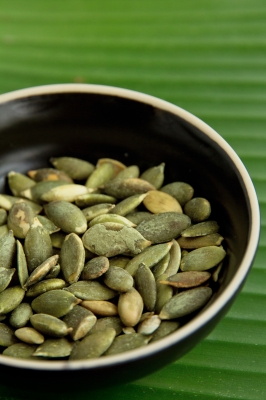
Pumpkin seeds (a.k.a. pepitas), a good source of omega-6 fatty acids. Source: Ponsulak. 10079040. FreeDigitalPhotos.net
Confounders: The red herrings of science
It’s also important to be mindful of what we call ‘confounders’ when reviewing a lot of this evidence. A confounder is a red herring in health studies, that puts you off the scent of what is actually responsible for a health benefit/harm.
For example, the following would not be an accurate conclusion from the research: “Omega-6 levels have increased in recent years. At the same time, rates of Alzheimer’s disease, cancer, obesity, autoimmune conditions and diabetes have also increased. This indicates that Omega-6 causes these conditions.”
There are many confounders in all of this, including that people are eating more food and exercising less than decades ago, which of course would lead to obesity. And we know that obesity is a risk factor for some of these conditions, like several types of cancer and type 2 diabetes. So you certainly couldn’t say that eating foods high in Omega-6 causes these conditions!!!
Omega 6 : Omega-3 ratio
The importance of having a balance of Omega-6 and Omega-3 fatty acids in our diet has also been discussed both in the popular media and in the scientific literature. Briefly, there is evidence to indicate that the ratio of Omega-6 to Omega-3 in traditional hunter-gatherer diets was fairly even, estimated to be 0.79. So they had a similar intake of Omega-6 and Omega-3 fatty acids. Nowadays, estimates place the average ratio at around 16:1, or in other words, we have far more Omega-6 in our diet than Omega-3.
This is a growing area of research, and it’s too early to draw any firm conclusions from what’s currently available. But keep in mind with all of this that Omega-6 is only half the picture. A growing body of research supports the health benefits of Omega-3, and many of the trials that have looked at polyunsaturated fat don’t separate out the two forms. See my next post for more on this.
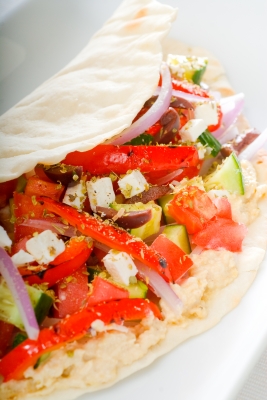
A traditional Mediterranean style of eating is rich in plant foods and fish, including a fairly large amount of olive oil. The ratio of Omega-6:Omega-3 is fairly even in a traditional Mediterranean (Cretan) way of eating. Source: KEKO64, FreeDigitalPhotos.net
Summary
In short, there isn’t enough evidence to date to support changing our stance from the last post:
Eat less animal fats, more plant oils (and fatty fish!)
(Remember that ‘plant oils’ includes whole food sources: seeds, nuts, avocado, peanut butter, tahini, and also includes margarine)
One way of eating that reflects the evidence supporting plant oils is a traditional Mediterranean one. A traditional Mediterranean way of eating has plenty of plant oils, and level 1 (highest possible) scientific evidence supporting its health benefits. It also has an even balance of Omega-6 and Omega-3 fatty acids. See a Dietitian for practical guidance and recipes if you want to make a major change to your way of eating.
In my last post in this series, I’ll be looking at Omega-3 fatty acids in more detail. Which conditions does Omega-3 help with, and for which is there no point? Is fish oil supplementation a good idea, or is it overhyped? Stay tuned!
– Sonia
…
For a more detailed examination of this issue, go to Part 1 and Part 2 of a series on Bill Shrapnel’s (APD) blog, Skeptical Nutrition. Or check out this ABC interview of the author of a highly publicised book on this topic, as well as a range of medical and nutrition professionals. Both the article and the interview address a couple of fundamental flaws in the argument that Omega-6 is bad for you in more detail, including inaccurate conclusions drawn from scientific studies that are often cited in this argument.
Disclaimer: This post is designed for the general population. If you suffer from a specific medical condition, consult your GP or Dietitian (AU/UK/US) for advice.




